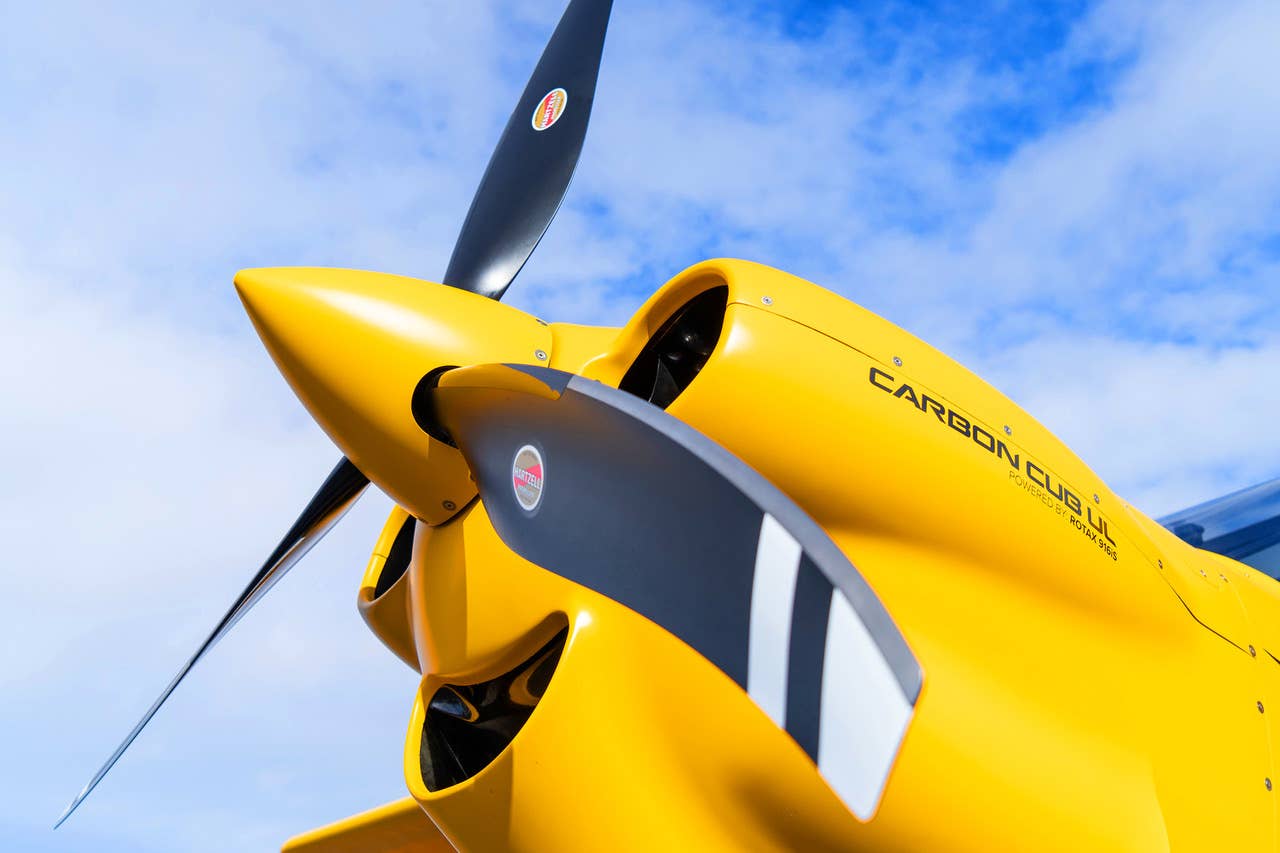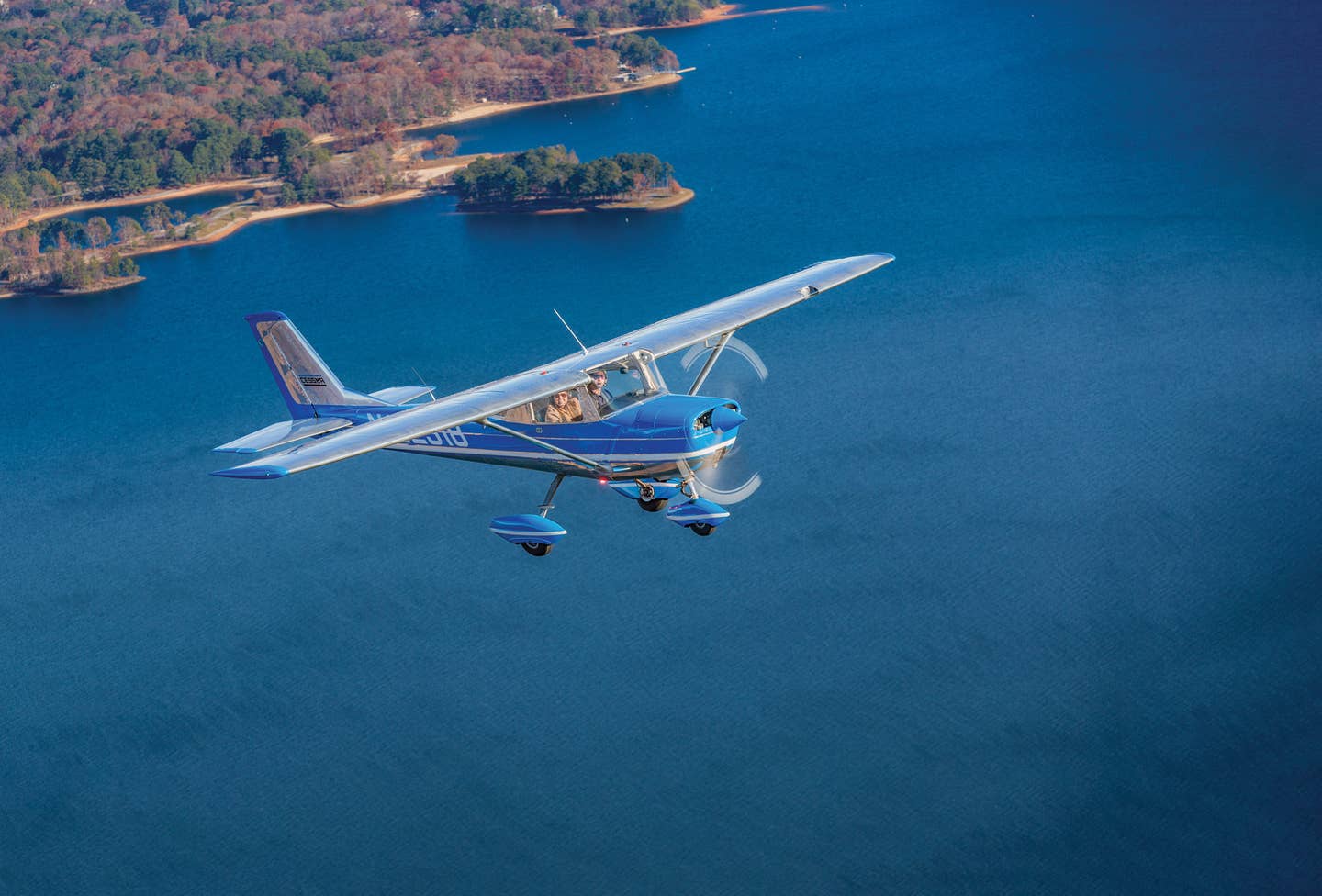Blimps, Dirigibles and Perpetual Motion Machines
A cool new airship gets floated. Another crash lands. What the heck is going on?
Airships. With that one word said, let me just add this: if you're still reading, thank goodness.
It's not that lighter-than-air craft aren't fascinating. They are, and there are some really crazy things happening with them these days. It's just that almost no one knows that or seems to care. That apathy is born of the fact that for 80-some-odd years, the world has had little use for blimps.
But if everybody has been over blimps for so long, then why are we seeing new companies and new ideas for new kinds of airships popping up in the past few years? Don't these entrepreneurs know that there hasn't been much spark in the segment since the Hindenburg horrified humanity when it went up in flames in Lakehurst, New Jersey, back in 1937, claiming the lives of 36 people? That worst-possible-case arrival signaled the end of commercial airship operations. Not that they had much promise before that hydrogen-fueled disaster. Airships were a doomed species even before Lakehurst, with the advent of Douglas airliners, among others, that would cut travel times to theretofore impossibly short spans all while carrying passenger loads factors higher than blimps ever could.
So today, is it possible there's new life ahead for airships? A few companies think so.
Floating Terms
Okay, before airship lovers go up in flames of anger by my casual misuse of the terms, here are some definitions. You've doubtless heard the terms "blimp" and "airship" and "Zeppelin" and probably "dirigible," too. But what's the difference? Are they four distinct kinds of things?
Happily, they are not. In short, they're all airships. (Phew. That was easy.) All airships are aerostats, which are lighter-than-air craft that are flown by people. Hot air balloons are aerostats, too. These days the government uses the term "aerostat" to refer to large, tethered balloons that are used for surveillance purposes at the border.
A blimp is an airship that gets its shape from the skin of the balloon itself. Whatever rigidity it does possess is due to the pressure of the internal gas and the strength of the envelope, which is what they call the balloon. They also refer to the lifting compartments as gasbags. No lie. In the case of a blimp, the entire airship is a gasbag.
Even though it will contain gasbags, a dirigible is not a blimp, at least not technically. Dirigibles can be rigid or semi-rigid airships, their structure largely maintained by an internal airframe. The Hindenburg was a dirigible, an airship with an internal frame. The semi-rigid ones are part dirigible and part blimp, but they get called dirigibles, too, we're guessing because early-last-century blimps were considered lesser vessels. Regardless of who's throwing shade on whom, in the end they're all airships, so when in doubt, you can always rely on that term.
Unlike the other terms, "Zeppelin" isn't a technical description, but rather a brand name that the public adopted a century ago as generic, like facial tissues being referred to as "Kleenex" or cotton-tipped swabs as "Q-tips." The British rock group Led Zeppelin, famous for its classic ballad "Stairway To Heaven," is indeed named after the Zeppelin airships, specifically by the one that caught fire in 1937. The term is a disguised play on words on the term "lead balloon." The band came up with the name after a rival predicted the group would be a bust, like a lead balloon. Co-opting the idea, the band, which featured guitarist/songwriter Jimmy Page and vocalist Robert Plant, drummer John Bonham and bass player/keyboardist John Paul Jones, adopted the name "Led Zeppelin," which sounded a lot more dangerous and combustible than "lead balloon," which proved to be true. People who were around at the time say that the idea to change the word "lead" to "led" was the manager's, done in order to prevent people from mispronouncing "lead" as "LEED."
Providing a physical stairway at least partway to heaven, Zeppelin airships weren't blimps; they were and are dirigibles---there's a company making airships by the "Zeppelin" name today, none of which are made of lead. While the line of succession from the original Zeppelin company of the early 1900s to today's firm is tenuous, the modern-day airship maker did get its seed money in the early 1990s from the original firm. Both companies are/were based in Friedrichshafen, Germany, where today's annual Aero Expo sport aviation trade show takes place.
If you think you've got the terms figured out, we've got some bad news. Goodyear, famous for its blimps, had a partnership with Zeppelin in the interwar years and has been flying airships since 1925. Goodyear is sure to mess up everyone's understanding of which kind of airship is which because it insists on referring to its eponymous airship as the Goodyear Blimp, even though its current crafts are not blimps at all but semi-rigid airships, dirigibles. Why not use that term, then? "Goodyear Semi-Rigid Airship" has a nice ring to it, right? Okay, not so much. The new Zeppelin company manufactures the current fleet of three Goodyear "Blimps."
How They "Fly"
How airships work is pretty self-evident. They fly because they float. Because they are lighter than the air surrounding them, they rise up in it, kind of like a helium balloon. Okay, exactly like a helium balloon. Airships do create some lift on their own when in motion, due to their shape. In that regard, they are a kind of lifting body, though the ratio of lift to float in an airship is very small, and the same could be said for most fixed-wing aircraft as well. And some airships have vestigial-looking wing-like structures that provide some aerodynamic lift and control, though it's not much of either commodity. Airships get around through a combination of gravity and hefty shoves. They're notoriously difficult to park. It takes a crew of a dozen or more experienced ground handlers working in close coordination with the pilots to get the big floaty beasts safely moored after a flight.
Unlike hot air balloons, which float on the breeze, airships are powered craft that go where their pilots want them to, for the most part, anyways. Engines provide the motive force to make an airship move faster than or against the wind, and those engines are typically attached to the outside of the envelope or to what's known as a gondola, the attached structure beneath the balloon where the pilot and passengers typically ride. In most cases, airships are twin-engine aircraft, and for a reason. They need to use differential power in order to steer. To turn right, they increase the power in the left engine or decrease it in the right or some combination of those things. It's vice versa to go left. In early airships, mechanics were stationed at the engines so they could maintain them in flight. Not a job we'd want. A few modern airships are looking to use electric power as the propulsion of the future.
For flight control, airships use a combination of technologies, including venting gas, dropping ballast, transferring water weight internally to change the center of gravity and adjusting flight control devices, like elevators and rudders, for fine control.
That said, there's limited fine control of an airship. These vessels really do handle like large ships afloat in a sea of water instead of air. Nothing happens fast in an airship, and there's no time to delay. Airship pilots need to anticipate changes far ahead of time while also being ready to make instantaneous adjustments to the craft's trajectory because the need for lead-time is great. Airships, unlike sea-going craft, have the added dimension of altitude and must cope with the vicissitudes of the profound effects of wind speed and wind direction. Granted, these weather phenomena affect large, engine-driven oceangoing vessels too, but to a smaller degree in general. Suffice it to say that airship pilots need to be supremely skilled aviators.
A New Future For Airships?
Since the demise of the category as a mover of people in the mid-1930s, airships have struggled to maintain relevance. They haven't disappeared. They have, rather, become tethered to a couple of common roles, serving as giant floating billboards advertising everything from tires to life insurance, while they simultaneously serve as camera platforms at big sporting events, like tennis and golf tournaments. When the action down on the court or course gets a bit slow, which is often, that bird's-eye-view camera shot can really liven up the broadcast. Or at least that's the theory.
One of the reasons for airships' lack of popularity is not, we might add, their propensity to catch fire. Airship makers have had the up-in-flames thing worked out for many decades. Today almost every airship is filled with helium, which is about as light as hydrogen and a lot less flammable. It is, unfortunately, a lot more expensive, but the investment seems worth it given hydrogen's extreme flammability. With that, some observers point out that Jet A and 100LL, the fuels that power nearly every conventional fixed-wing aircraft, are both extremely flammable, like hydrogen. And for the record, there is an ongoing, lively debate about why the Hindenburg caught fire. Its hydrogen filling has long been fingered as the culprit---a single spark was said to have set it aflame---but many believe that the craft's chemically treated fabric covering was a deadlier factor.
So, no, it's not fear of fire that has kept airships from regaining the spotlight; it's that they're painfully slow. After all, who wants to whoosh from New York to L.A. in six hours or so when you could instead bounce around from coast to coast over a weeks' time? Well, everyone!.?
Airships worked as a form of transport back in the 1930s only because there weren't any decent airliners yet, so a trans-Atlantic trip across The Pond in a Zeppelin made sense. The Zeppelins could get you from Germany to the New York area in around five days, about the same length of time as a steamer, though at a much higher price. They were like Concorde for their day, but without the sonic boom, and passengers paid a hefty fee to fly on them. Regardless, by the 1950s intercontinental jets had put both airship and passenger ship companies out of business, or very nearly so.
Historical Artifacts Or High-Tech Marvels?
Technologically, airships are nothing short of awesome, though that's not obvious to outside observers. Martha and John King, from King Schools, have ratings in every kind of aircraft under the sun, and yet they rave about their time getting their lighter-than-air certifications as among their most rewarding. I had the chance to fly on the old Goodyear (actual) Blimp a few years ago at Oshkosh. It was fun to ride in---the views were spectacular, but even more, it was clearly an incredible challenge to fly. And as I mentioned, the Goodyear Blimp is world-class at doing what it's supposed to do, spreading the Goodyear name.
Is There More?
But are airships good for more than that? If so, they're not doing it yet.
Still, over the years we've seen numerous attempts by companies to reintroduce airships of different varieties as a way to move people about. They've all failed before they even launched service. So new companies are looking for new ways to market their admittedly cool new designs while they continue to sell airships for their old roles.
The highest-profile one in recent years, the Hybrid Air Vehicles Airlander 10, is the largest aircraft in the world at 301 feet in length, more than 85 feet high with a wingspan of more than 142 feet. Weight is a trickier subject with airships than with their heavier-than-air relatives, because for a time, airships weigh less than nothing. But the weight of their structure is always known, and the Airlander 10 tips the scales in at a max takeoff weight of better than 73,000 pounds, a third again heavier than an Embraer regional jet.
And the Airlander does have an interesting design, that is, if being simultaneously cringeworthy and luxurious can be classified as interesting.
The cringey part? To some folks, the twin-chamber design looks like a giant butt, an assessment that people with whom I've shared photos of the airship agree.
Luckily, the really interesting and innovative bits outweigh the naughty variety. The most noteworthy is the passenger deck, which features glass floors and 360-degree views of the environment. The idea is to create a premier experience for the passengers, and the Airlander does it. The level of luxury doesn't rival a Gulfstream, but rather an Upper West Side apartment, though with more variety in the selection of an outside view.
Technologically, the company calls the thing a hybrid airship, in that it gets its lift from little wing things and the shape of the vehicle itself, and it's steered somewhat aerodynamically and somewhat by pointing its big engines in varying directions, which they call vectored thrust, just like an F22. We'll let them have that one. The company says the ship gets as much as 40 percent of its lift from its structure, and close to the ground the engines can be used to provide some lift as well.
The company has reached an agreement with Collins Aerospace, which will develop electric motors for the craft. With electric propulsion, the $32 million Airlander 10 will not only be huge, but it will be quiet and relatively economical to operate. With a max capacity of 19 passengers, it won't be for moving large numbers of people from point to point but small numbers of people over interesting places.
Many questions remain to be answered. Will such a market for luxury loitering materialize? Will the great size and difficulty in staging the craft prevent it from getting from one spectacular location to the next reliably and economically? How many airships will the company need to sell to stay profitable, and where will those sales come from? It's always a risk to develop a product for a market that doesn't yet exist, and Hybrid Air Vehicles is taking just such a risk with its airship. We're curious to see how it goes. The company hopes to have its design certificated by EASA---we are purposely not thinking about Brexit right now---within the next few years. We'll keep you apprised.
Perpetual Motion Machine?
Another airship, the Phoenix, is, again, a fascinating ship but with the added benefit of not looking like a butt.
A team of Scottish scientists is developing the craft as a proof of concept, and it's working. They flew the thing in March, and all systems functioned exactly as they'd hoped. The name "Phoenix" comes from the mythical bird that rises from its own ashes. In this case the airship would do that over and over again. While not a true perpetual motion machine, it's not far from that. The concept that allows it to fly nearly forever, the change from lighter than air to heavier than air, isn't really new, but it hasn't been used in a full-scale airship to our knowledge. As the ship goes between sinking and floating, it milks that change of state for propulsion.
While this emerging technology has the promise of being able to stay aloft for really long periods of time, which might come in handy for surveillance as a sky-high observation platform, or in telecom, say as a floating wifi hotspot, there currently doesn't seem to be much demand for such mobile hot spots. Moreover, the idea has been tried several times---Scaled Composites, founded by Burt Rutan and now owned by Northrop Grumman, focused for years on developing aircraft that could loiter for long periods while serving as aerial hot spots. The idea hasn't gone anywhere, and with the advent of 5G a few years away, it's hard to imagine that it will, but then again, a craft like the Phoenix that can fly for extended periods of time while burning no fuel might change the value proposition fundamentally.
That is, after all, how paradigm change happens, by new ideas upending old ones. In this case, it would be a very old idea making good on a promise that has been on pause for the better part of a century.

Subscribe to Our Newsletter
Get the latest Plane & Pilot Magazine stories delivered directly to your inbox






